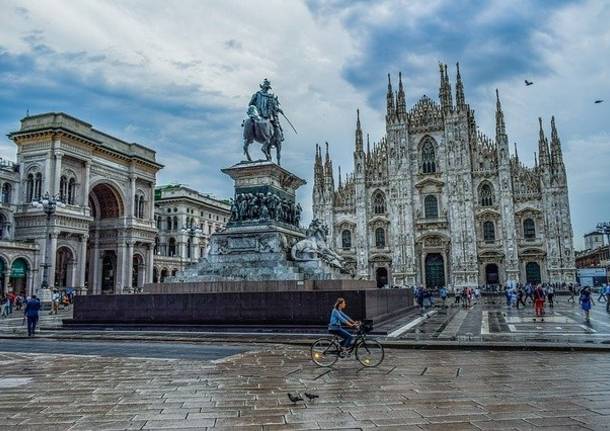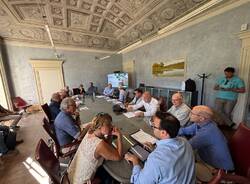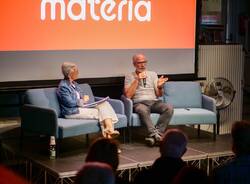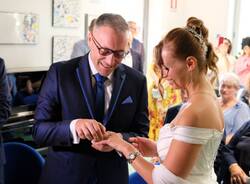Culture produces social cohesion and also €90 billion
The report “Io sono cultura” (I am culture), by the Symbola Foundation, has been presented. With more than €24 billion and 353,000 people employed in this sector, Lombardy is at the top of the Italian cultural landscape.

After listening to “Io sono cultura, l’Italia della qualità e della bellezza sfida la crisi” (I am culture, the Italy of quality and of beauty challenges the crisis), a report by the Symbola Foundation, and the results of the study by the Guglielmo Tagliacarne-Unioncamere Research Centre, there is already an answer to the many questions about Italy’s recovery. Indeed, if there is something that can give sense to the challenge set by the pandemic crisis, it is culture. This is not the conviction of some easy-going optimist, but what emerged from the data presented and from the round table discussion followed by the presentation of the report. (Photo by Dimitris Vetsikas from Pixabay)
CULTURE GIVES MEANING TO OUR BATTLES
“Where shall we start?” Ermete Realacci wondered. The President of the Symbola Foundation recalled a great man in history: Winston Churchill. Indeed, it is said that, during the Second World War, the British Prime Minister commented on the drastic cuts to culture made in the budget, saying, “Then, what are we fighting for?”
According to Realacci, we can fight the pandemic only if we give meaning to this battle. “Common culture is capable of directing a country’s desire for rebirth. At a time when Europe, with Next generation EU, has indicated ecological transition as a new Bauhaus, it has also indicated the point at which culture, research, innovation and manufacturing intersect to rebuild a common heritage.”
Maybe it is because in the collective imagination, the pandemic has been seen as a war, but also Stefano Bruno Galli, Lombardy Region’s Councillor for Autonomy and Culture, said in his speech (which was recorded, because of other official engagements) that, immediately after the Second World War, in which Milan was destroyed, a music critic and an impresario founded the famous orchestra I Pomeriggi musicali (Musical Afternoon Orchestra) at the Dal Verme Theatre. “I believe that culture can become an important instrument in rebuilding social cohesion,” Galli said. “On 26 November 1945, at 5.30 p.m. there was the first concert, which sent an important message: culture is a supreme way to rise up from the ruins of humanity.”
WHAT CULTURE IS WORTH
The economic aspect is certainly not the only way to judge the role played by culture in all its forms, but the figures provided by Alessandro Rinaldi, the director of statistical and economic research at the Guglielmo Tagliacarne-Unioncamere Study Centre, are significant: the contribution of culture to Italy’s GDP amounts to €90 billion, which is the sum of strictly cultural activities (€50 billion) and creativity-driven activities (€40 billion). There are 274,316 private companies involved in this sector, most of which operate in architecture and design, publishing and printing, communication and video games. “In the year before the pandemic,” Rinaldi explained, “businesses involved in culture made a major contribution to employment, registering an increase of 1.2%, compared to 0.6% for the entire national system. Companies that operate in the sector of historical and artistic heritage, which are generally public, also recorded significant growth.
Twenty six percent of what the cultural system as a whole produces, that is, more than a quarter, is produced in Lombardy. Naturally, it is Milan (9.6%) that leads the ranking of Lombardy’s provinces in terms of added value. Next comes Monza and Brianza (5.6%), Como (5.3%), Bergamo (4.8%), Lodi (4.6%), Mantua (4.6%), Lecco (4.6%), Varese (4.5%), Brescia (4.3%), Cremona (4.0%), Pavia (3.9%) and Sondrio (3.4%).
As far as employment is concerned, companies that operate in the cultural sector mainly employ young people, in the 25-34 age range, up to 44 years of age. “This demand depends on the fact that companies require at least a three-year degree,” Rinaldi continued, “so the focus is on skilled employment.”
The impact of Covid on the cultural and creative production system has been devastating: out of 1800 companies interviewed, 66.4% have suffered significant reductions in turnover, with peaks of 80% in the performing arts. As regards the strategies adopted by companies to emerge from the crisis, immediately after the reorganisation of spaces and production processes, there is the acceleration of the digital transition.
CULTURE SWINGS BETWEEN THE MATERIAL AND THE IMMATERIAL
The architect Paola Perotti, who chaired the meeting, raised the point that when we talk about culture in relation to the economy, the line between the material and the immaterial is never so clear-cut, and neither is the distinction between content and container.
Giovanni Fosti, the President of the Cariplo Foundation, said, “At this critical time, it seems to me there are two elements that we treat in a distinct and separate way, one is economic value, the other is social value. We often wonder whether we need to pursue something that generates more economic benefit or more social benefit. The figures tell us that the culture sector employs more than 1.5 million people and accounts for a good 5% of the country’s GDP. At a time like this, our ability to create a sense out of what is happening and to do so by working together is not of secondary importance, but is crucial in order to get out of this situation. Culture can produce meaning and economic value, and this is important for today and for the future.”
So, given that the economic value generated by cultural activities is an asset for this country, we now need to establish its current creative effects and its ability to generate involvement, which are essential aspects when rebuilding from the cultural ruins caused by Covid. According to Filippo del Corno, the Councillor for Culture on Milan City Council, the economic value is in danger of remaining in the shadow, if we don’t take account of the social value of culture, too. Del Corno remarked, “The social mission of the cultural programme can be measured in democracies through cultural involvement, which is the main instrument for triggering two crucial processes for the overall health of society: the increase in the shared cognitive heritage, which is a key factor of global economic development linked to the overall economic growth of the entire community, and the promotion of forms of active citizenship, which, in turn, generate and produce forms of social cohesion that are essential to general wellbeing.”
Translated by Elisa Cairone, Maria Chiara Bignoli and Charlotte Ovalle
Reviewed by Prof. Rolf Cook
La community di VareseNews
Loro ne fanno già parte
Ultimi commenti
Emanuele Zanetti su Motociclista di Ferno ucciso da un orso in Romania
GrandeFratello su Superate le 700 firme per la petizione sul recupero del Grand Hotel Campo dei Fiori di Varese
Felice su Motociclista di Ferno ucciso da un orso in Romania
Stefano64 su Neil Young torna dopo l'enorme successo di Harvest: ma non è il disco che tutti si aspettano
Alessandro Zanzi su Superate le 700 firme per la petizione sul recupero del Grand Hotel Campo dei Fiori di Varese
Felice su La bibliocabina, la panchina e il cane che fa pipì. A Fagnano Olona scoppia la polemica
















Accedi o registrati per commentare questo articolo.
L'email è richiesta ma non verrà mostrata ai visitatori. Il contenuto di questo commento esprime il pensiero dell'autore e non rappresenta la linea editoriale di VareseNews.it, che rimane autonoma e indipendente. I messaggi inclusi nei commenti non sono testi giornalistici, ma post inviati dai singoli lettori che possono essere automaticamente pubblicati senza filtro preventivo. I commenti che includano uno o più link a siti esterni verranno rimossi in automatico dal sistema.